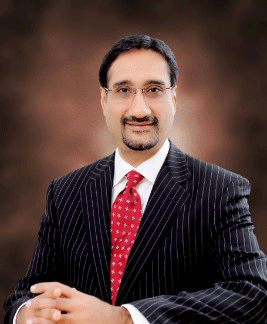
Interview with Mr. Jaswinder Ahuja, Corporate Vice President and Managing Director, Cadence Design Systems (India) Pvt Ltd
1. India as semiconductor manufacturing hub, your thoughts. Does India really need a semiconductor hub?
The future for fabs in India looks positive, with the government planning to invest $10 billion to build two chip manufacturing facilities and $400 million to develop a microprocessor. Further, the Government of India has also created a dedicated “Electronics Development Fund” to provide a boost the nascent ESDM eco-system here, leveraging the venture capital community to promote hardware startups in India.
The Electropreneur Park in Delhi, funded by Department of Electronics and Information Technology (DeitY) and Electronics India, in partnership with Software Technology Parks of India (STPI), India Electronics and Semiconductor Association (IESA) and Delhi University is already up and running with the aim to identify and support 50 startups working on electronic product designing and development over the next five years.
The Indian Fabs will have impact in three areas – on the domestic market, the international market and in ecosystem development.
Impact on the domestic market
The setting up of the fabs will provide a much needed boost to the nascent and emerging entrepreneurial ecosystem in the country. There are several advantages that fabs will bring: first, the ‘at home’ advantage will give domestic OEM’s and design firms access to the latest foundry techniques, tools and technologies to build products locally; second, it will reduce our dependency on importing chips, thus saving cost; third, It will encourage home grown entrepreneurs to design and develop products suited to the unique requirements of the domestic market; and lastly, it will help in the development of the local fabless semiconductor industry.
Once established, the new fabs will help stimulate the flow of capital as well as technology into the country, creating new opportunities for electronics innovation.
Global impact
Fabs are also important in enabling local ESDM players to reach out to developing markets worldwide, making India globally competitive in semiconductor manufacturing. The fabs enable India’s electronic products to reach beyond just local markets – a huge business opportunity.
Emerging ecosystem
Apart from the demand side of the equation that is discussed above, there is a supply side to fabs as well. Fabs need an ecosystem to thrive. To draw a parallel – in the automotive industry an ancillary ecosystem has developed to supply components and parts to automobile manufacturers. This helps Indian-made vehicles stay competitive in local and global markets. Similarly, fabs also need an ecosystem to supply them with raw materials such as specialty chemicals and equipment so that they can stay competitive. This kind of ecosystem was not needed; but with the fabs coming up this ecosystem should develop, creating business value and jobs.
2. What are the challenges?
There are two types of challenges – business and technology-related.
Business challenges include high capital costs associated with setting up of the fabrication facility along with the requirements for solid infrastructure such as uninterrupted electricity, access to ports, water, and a good road network. Setting up a fabrication facility can easily run into several billion dollars. For advanced node fabs, the costs run are higher still.
A second business challenge is to do with the demand for the fabrication facility. Daily operational costs of running a fab are in the tens of millions of dollars and anytime a fab sits idle it incurs huge losses. Indian fabs will have to ensure that there is enough market demand – from domestic or international players – to keep them “fully loaded” or operational at all times.
Keeping in mind these variables, the proposals cleared by the Indian government are for specialty fabs around 90nm, 65nm and 45nm geometries as at these nodes, ongoing investments are not prohibitively high. Further, specialty fabs focusing on mixed-signal, analog, power management, MEMS are predicted to have high growth markets, thanks to technology trends like the Internet of Things, mobile connectivity, and wearable devices.
Technology challenges center around the knowledge required to build and manage the day-to-day operations of the fabs. India is well known around the world for its design expertise and project management skills, but building and running a foundry requires expertise in the latest manufacturing technologies, as well as knowledge of factory optimization techniques, advanced process controls, material sciences, yield enhancement to name a few. That kind of expert knowledge is what the technology partner brings to the table.
3. Is there any progress towards manufacturing?
The Digital India and Make in India campaigns have been introduced to kick start manufacturing in the country and to this end, the Government of India has introduced multiple proposals to incentivize both domestic and foreign OEM companies. In 2015, Government received interest from MNCs and foreign governments to start and support manufacturing in the country. For example, Foxconn, one of the world’s biggest consumer electronics manufacturers, announced revealed that it will be setting up a $5 billion factory in India agreement, and the Russian government has signed an agreement to manufacture military helicopters and to set up atomic power plants in the country.
With respect to fabs, Government has committed $10 billion to build the two fabs and has approved proposals put forward by two consortia led by Jaiprakash Associates Ltd and Hindustan Semiconductor Manufacturing Corp. $400 million has been set aside to develop a microchip processor and a separate Electronics Development Fund has bene created to inspire innovation in hardware design and manufacturing.
However, we are still waiting for manufacturing and startup activity to really take off. Indian electronics entrepreneurs now have a window of opportunity to develop products for the world. We hope the renewed focus and commitment, aided by government support, will help realize the goals of “Make in India” and the semiconductor fabs.






